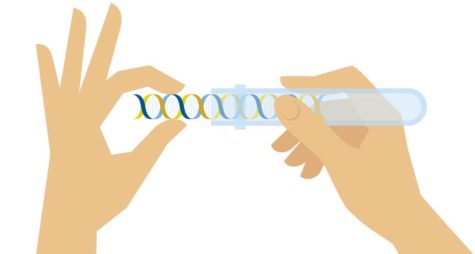Stem Cell Cures For Type I Diabetes
In the past few years, scientists have been using stem cell therapy as a revolutionary technique to cure previously unbeatable diseases.
Stem cells are a type of cell that can differentiate into another type of cell that carries out specific functions. A stem cell has the ability to differentiate into a liver or a nerve given it is manipulated properly. As stem cells are able to become any type of cell, realistically, they can be used to replace cells in organs that have malfunctioned or have been destroyed. Scientists saw the potential in this technique to pose as major development towards a cure for humans living with Type 1 diabetes. Typically the stimulus for the onset of the condition is not known but through research scientists have deduced it is mainly caused by an autoimmune reaction. Theoretically, the immune system goes into overdrive and attacks the islet cells in the pancreas which destroys the insulin producing function. If stem cells could be induced to become beta cells, they could be capable of producing insulin in people who would normally not be able to make their own insulin. Curing Type 1 diabetes would be a very important development as Insulin is one of the most expensive commonly used medications in the healthcare system and it affects people who have it greatly.
One trial where scientists were able to generate stem cells into beta cells is when they were able to produce and transplant Islet sized aggregates of beta cells into mice with type one diabetes. Islet groupings are groups of cells located in the pancreas with some capacity of producing insulin. Insulin is the fundamental hormone that is responsible for lowering blood sugar and allowing the sugar to be used by the cells.
Another trial where scientists tried to produce insulin producing beta cells did not end up working because some of the other stem cells specialized into other types of pancreatic cells that were not fundamental to producing insulin. This type of treatment did not work because there were not enough therapy cells producing insulin. As stated by Jeffrey R. Millman, Ph.D., an assistant professor of medicine and biomedical engineering at Washington University School of Medicine in St. Louis “the amount of insulin producing cells was not sufficient as there were too many other non-important cells that were blocking the way”. The way to make an artificial pancreas which is normally responsible for making insulin, would need to include enough specialized beta cells to produce insulin to replace the amount of insulin that is normally made.
Furthermore, an artificial pancreas would need to include alpha cells which are responsible for making glucagon to raise blood sugar in the event of low blood sugar. The pancreas is also responsible for producing somatostatin, which is an endocrine regulator hormone not produced in pancreases of people who have type one diabetes. Without these types of cells, the artificial pancreas would not replace the function of a normal pancreas. Medication would still be required to replace the lost functions.
All of the studies have been done on rats that have absolutely no immune systems so they are able to accept a transplant from a human. These studies have also been looking at what specifically causes type one diabetes and it serves to evaluate whether or not there are different subtypes of the diseases based on the determined cause.
These studies are completed to understand how to make an effective artificial pancreas that is able to circumvent these possible triggers to prevent it from being destroyed in the same manner the disease was triggered. The origins of the cells that will grow into delta cells are pancreatic acinar cells in mice to make the delta cells that produce insulin. A virus was used in tandem with these digestive cells to make the necessary genetic modifications. This method is called direct differentiation because it uses existing cells and repurposes them using them to perform a different function. Furthermore, the virus used to make these modifications enhances the safety factor for human use. In a lab setting, this method was proved to be conceptually plausible which makes it a possible method for developing beta cells for an artificial pancreas.
Another method that could be used to produce the insulin producing cells would be to take cells from patients with type one diabetes and convert them into Induced pluripotent stem cells. These are also known as iPS cells which are just another type of stem cells that could then be specialized into beta cells. The goal is to create a cure for type one diabetes without having to execute a pancreas transplant which requires anti rejection medication and is a costly procedure. In both of these cases, the stem cells could be made into an artificial pancreas without having to put patients into an unnecessarily risky procedure. Both of these options are not ready for use in humans as they have not been tested and developed enough.
Stem derived beta cells is a new concept that has only recently been explored and while it is new, early research is showing that it may be an effective treatment alternative to normal insulin therapy or a pancreas transplant. While a lot of studies are being conducted using animals, in vitro testing may prove to be just as effective in producing beta cells to be made into an artificial pancreas. If scientists could make an artificial pancreas, it would extend the lives of people living with type one diabetes and it would decrease the amount of money that was needed to pay for medication and health care for these patients.













